
1
Tasmania #09 Collage
| 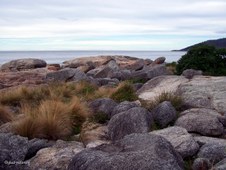
2
Bicheno Granite Outcrop
The seaside coastal town of Bicheno has interesting coastal walks which include some superb rocky outcrops and spectacular blowholes.
| 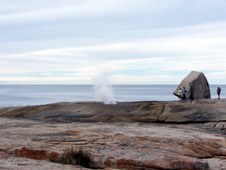
3
Bicheno Rocking Rock
Bicheno's famous Rocking Rock (a huge 80 tonne piece of granite balanced so that it rocks with the movement of the tide) and the very impressive local blowhole.
|

4
Red Lichen on Rocks
The rocks at Bicheno have a distinctive red colour as a result of deposits of red lichen.
| 
5
Bicheno Blowhole
Blowhole at Bicheno on the east coast of Tasmania.
| 
6
Australian Merchant Navy Memorial
Bicheno, Tasmania.
|

7
Waubs Beach
Bichino began around 1803 as Waubs Boat Harbour when Whalers and Sealers used the safe harbour. Today Bicheno is a major Fishing Centre and Holiday Resort.
| 
8
Baby Tasmanian Devil
A cute baby Tasmanian Devil (Sarcophilus harrisii) at East Coast Nature World.
| 
9
Baby Tasmanian Devil
This baby thought that one photo was enough!
|
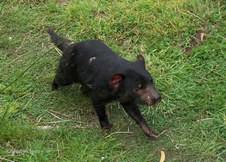
10
Tasmanian Devil
A battle-scarred Tasmanian Devil at East Coast Nature World. The Tasmanian devil cannot be mistaken for any other marsupial. Its spine-chilling screeches, black colour, and reputed bad-temper, led the early European settlers to call it The Devil. Although only the size of a small dog, it can sound and look incredibly fierce.
| 
11
Tasmanian Devil
The world's largest surviving carnivorous marsupial, the Tasmanian Devil has a thick-set, squat build, with a relatively large, broad head and short, thick tail. The fur is mostly or wholly black, but white markings often occur on the rump and chest. Body size also varies greatly, depending on the diet and habitat. Adult males are usually larger than adult females. Large males weigh up to 12 kg, and stand about 30 cm high at the shoulder.
| 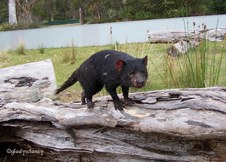
12
Tasmanian Devil
Devils are widespread in Tasmania from the coast to the mountains. They live in coastal heath, open dry sclerophyll forest, and mixed sclerophyll-rainforest -- in fact, almost anywhere they can hide and find shelter by day, and find food at night.
|

13
Tasmanian Devil
The Tasmanian Devil is mainly a scavenger and feeds on whatever is available. Powerful jaws and teeth enable it to completely devour its prey, bones, fur and all. Wallabies, and various small mammals and birds, are eaten, either as carrion or prey. Reptiles, amphibians, insects and even sea squirts have been found in the stomachs of wild devils. Carcasses of sheep and cattle provide food in farming areas. Devils maintain bush and farm hygiene by cleaning up carcasses. Devils are famous for their rowdy communal feeding at carcasses, the noise and displays being used to establish dominance amongst the pack.
| 
14
Tiger Snake
Tiger Snake (Notechis scutatus) at East Coast Natureworld. Tasmania has three species of Snake, the Tiger Snake is the most common and hard to distinguish from the Lowlands Copperhead, and the third species is the Whip Snake.
| 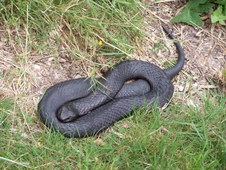
15
Tiger Snake
Tasmanian Tiger Snake has recently been shown to be the the same species as that which occurs on the south-eastern Australian mainland, (Notechis scutatus). The markings are extremely variable and should not be used in isolation to identify snakes. Colours range from jet black, through yellow/orange with grey bands to sandy grey with no bands. There are unconfirmed reports of red-bellied Tiger snakes in north-east Tasmania. Typical forms are of a black snake with either no bands or faint yellow to cream bands. Dark olive snakes with yellow bands are fairly common.
|

16
Tiger Snake
Generally the belly is pale yellow, white or grey, the enlarged ventral scales often edged with black. The head is broad and blunt. It can be difficult to distinguish the Tiger Snake from the Copperhead since sizes, habitat preferences and behaviour overlap somewhat. Tiger Snakes have 13 - 19 rows of scales around the middle of the body, the usual number being 17. On the mainland of Tasmania Tiger snakes reach a length of 1 to 1.8 m. Male tiger snakes reach a greater size than females and have larger heads.
| 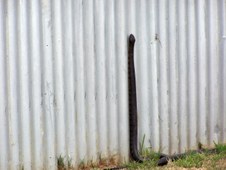
17
Climbing Wall of Snake-Pit
Tiger snakes feed mainly on mammals and birds under 300 g in weight. Tiger snakes habitually raid birds nests and have been found climbing trees to a height of 8 m. A good indicator of the presence of a Tiger snake is the alarm calls of small birds such as honeyeaters and thornbills. They also eat other vertebrates including lizards, smaller snakes, frogs and occasionally fish. Juvenile tiger snakes will use constriction to subdue struggling skinks, a principal food of smaller snakes. Adult snakes are also known to use constriction on larger prey as well. Tiger snakes are important predators of introduced rodent pests and readily enter the burrows of mice, rats and even rabbits in search of their quarry.
| 
18
Underside of Snake
The underside of the Snake as seen through the clear panel in Snake-Pit Wall at East Coast Natureworld.
|

19
Snake Head
The highly toxic venom of Tiger Snakes is produced in large amounts. The venom is mainly neurotoxic, affecting the central nervous system, but also causes muscle damage and affects blood clotting. The breakdown of muscle tissue can lead to kidney failure.
| 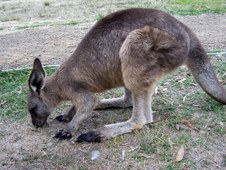
20
Forester Kangaroo
Forester Kangaroo (Macropus giganteus) is the largest marsupial in Tasmania and the second largest in the world -- males can reach over 60 kg and, when literally on tippy toes, stand 2 m tall! Colour varies from light brownish grey to grey. They have relatively large ears and differ from the other two species in having hair between the nostrils and upper lip. They often make clucking sounds between themselves and give a guttural cough when alarmed. The Forester kangaroo is restricted to northeastern Tasmania and small areas in central Tasmania. The species is common on mainland Australia, where it is commonly known as the grey kangaroo.
| 
21
Emus at Rest
Two Emus resting at East Coast Natureworld. The Emu is Australia's largest bird and although flightless, the powerful legs can give them speeds up to 50 kph.
|

22
Young Emu
This young Emu with mud on his head was eyeing off my camera.
| 
23
Young Emu
East Coast Natureworld operates as an animal rescue centre. Injured and orphaned animals, birds and reptiles are rehabilitated for return to the wild. If this is not possible then a safe and happy home is provided for the rest of their lives in as natural a setting as possible.
| 
24
Emu Portrait
At East Coast Natureworld, expert veterinary input, full-time animal behaviourist and dedicated carers ensure that the welfare of the animals is never compromised.
|

25
Laughing Kookaburra
The Laughing Kookaburra (Dacelo novaeguineae) has been introduced to Tasmania from mainland Australia.
| 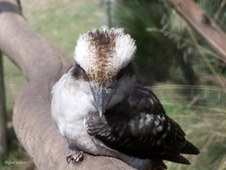
26
Laughing Kookaburra
Laughing Kookaburra at East Coast Natureworld, Tasmania.
| 
27
Laughing Kookaburra
East Coast Natureworld operates as an animal rescue centre. Injured and orphaned animals, birds and reptiles are rehabilitated for return to the wild. If this is not possible then a safe and happy home is provided for the rest of their lives in as natural a setting as possible.
|
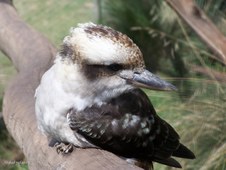
28
Laughing Kookaburra
Injured wildlife receive veterinary input and rehabilitation by dedicated carers at East Coast Natureworld.
| 
29
Female Masked Owl
Masked Owl (Tyto novaehollandiae) The female masked owl is larger than the male, measuring about 47 cm in length, where as the males are about 37 cm in length. They are a robust owl with a crouched posture. The eyes are black eyes inside a round, dark-bordered face mask which is a dark chestnut colour. The back is dark brown with fawn patches and white flecks, while the undersides are buff coloured with dark spots.
| 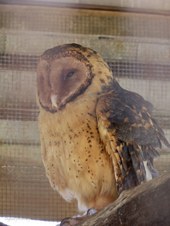
30
Female Masked Owl
If cornered or threatened, masked owls sway from side to side spread their wings and hiss and snap their beaks.
|

31
Female Masked Owl
They live in forests and woodlands. During the day the owls roost in hollows in trees or rock crevices. They are distributed around coastal Australia within a few hundred kilometres of the sea. In Tasmania where there are no other large owls, masked owls are the biggest and darkest of all. With no owl competitors, they occupy a wider variety of habitat and occur in greater numbers than anywhere in Australia.
| 
32
Female Masked Owl
The breeding season varies according to food supplies. They prefer the big hollows of trees to nest, usually at a considerable height. They lay two or three pearly-white, oval-shaped eggs. The female stays in the nest initially with the male ferrying food to her and the chicks. It is three months before the young learn to fly.
| 
33
Male Masked Owl
The masked owl eats small mammals, reptiles and occasionally birds. Due to its larger size, the Tasmanian race feeds regularly on rabbits.
|

34
Male Masked Owl
Male Masked Owl (Tyto novaehollandiae) at East Coast Natureworld.
| 
35
Male Masked Owl
Male Masked Owl (Tyto novaehollandiae) at East Coast Natureworld.
| 
36
Little Corella
Little Corella (Cacatua sanguinea).. Little Corellas are mostly white, with a fleshy blue eye-ring and a pale rose-pink patch between the eye and bill. In flight, a bright sulphur-yellow wash can be seen on the underwing and under tail. The sexes are similar in plumage, and young birds look like the adults. The adults measure 35cm - 39cm; young birds are slightly smaller.
|

37
Pond Scene
Autumn tones in this pond scene at East Coast Natureworld.
| 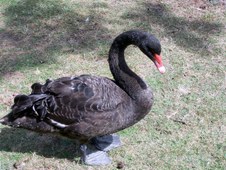
38
Black Swan
Black Swan (Cygnus atratus) is a protected species in Australia.
| 
39
Mulga Parrot Pair
A pair of Mulga Parrots (Psephotus varius) with a nesting box.
|

40
Wattlebird
In the aviary at East Coast Natureworld.
| 
41
Tasmanian Devil
Tasmanian Devil (Sarcophilus harrisii).
| 
42
Tasmanian Devil
At East Coast Natureworld.
|

43
Tasmanian Devils
At East Coast Natureworld.
| 
44
Tasmanian Devils
At East Coast Natureworld.
| 
45
Tasmanian Devils
At East Coast Natureworld.
|

46
Inquisitive Cape Barren Goose
Cape Barren Goose, (Cereopsis novaehollandiae).
| 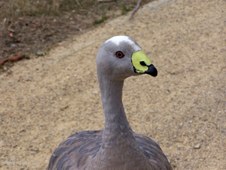
47
Cape Barren Goose
It kept coming closer! The Cape Barren goose is a handsome bird about the same size as a domestic goose. Its plumage is pale grey, with black markings near the tips of its wing feathers and tail. It has pink legs and black feet. Its most striking feature is the bright greenish yellow cere on its short black bill.
| 
48
Cape Barren Goose
Closer and Closer!!
|

49
Cape Barren Goose Feathers
Too Close!! At least I got the Feather Detail.
| 
50
Pacific Black Duck
(Anas superciliosa) ..The Pacific Black Duck measures 50 to 60 cm in length. It is mostly mid-brown in colour, with each feather edged buff. The head pattern is characteristic, with a dark brown line through the eye, bordered with cream above and below and a dark brown crown. The upperwing colour is the same as the back, with a bright glossy green patch in the secondary flight feathers. The white underwing is conspicuous in flight. Young Pacific Black Ducks are similar to the adults in plumage.
| 
51
Pacific Black Duck
The Pacific Black Duck is one of the most versatile of the Australian ducks. It frequents all types of water, from isolated forest pools to tidal mudflats, and is found in all but the most arid regions of Australia. Outside Australia, its range extends throughout the Pacific region.
|
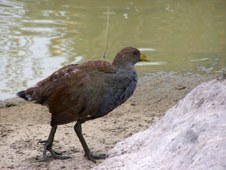
52
Tasmanian Native Hen
Tasmanian native hen (Gallinula mortierii) is found only in Tasmania, being distributed throughout the state except for the west and southwest. It ranges from the coast to areas 1000 m above sea level.
| 
53
Pool Reflections
East Coast Natureworld.
| 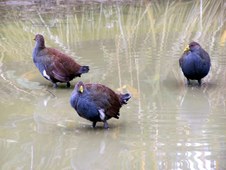
54
Swamphen Trio
A trio of Swamphen enjoying the pond at East Coast Natureworld.
|

55
Chestnut Teal
Pair of Chestnut Teal at East Coast Natureworld.
| 
56
Chestnut Teal
The Chestnut Teal (Anas castanea) is more often found in the estuarine, occasionally coastal areas, than most species of ducks. They feed by dabbling or up-ending, often grazing and also taking plant seeds and leaves as well as some insects and crustaceans. They are usually seen in small groups although larger flocks may congregate at times.
| 
57
Ducks by Pond
At East Coast Natureworld.
|

58
Tasmanian Native Hen
The Tasmanian native hen is a distant relative of the domestic hen.
| 
59
Scenic Pond
Scenic Pond for the Waterbirds at East Coast Natureworld.
| 
60
Black Swans
Black Swan (Cygnus atratus). The Black Swan has a body length of up to 142 cm, with the females being smaller than the males. In adults, the body is mostly black, with the exception of broad white wing tips, which are visible in flight. The bill is a deep orange-red, paler at the tip, with a distinct narrow white band towards the end. Younger birds are much greyer in colour, and have black wing tips. It is the only entirely black-coloured swan in the world.
|
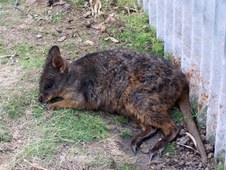
61
Tasmanian Pademelon
The Tasmanian Pademelon (Thylogale billardierii) is a stocky animal with a relatively short tail and legs to aid its movement through dense vegetation. It ranges in colour from dark-brown to grey-brown above and has a red-brown belly. Males, which are considerably larger than females, have a muscular chest and forearms, and reach up to 12 kg in weight and 1 - 1.2 m in overall length, including the tail. Females average 3.9 kg in weight.
| 
62
Tasmanian Wedge-tailed Eagle
The Wedge-Tailed Eagle (Aquila audax) is found in a wide variety of habitats. It is almost black when mature, has feathered legs and a long wedge-shaped tail. It is a massive bird which can weigh up to 5 kg, with a wing span of up to 2.2 m or just over 7 feet. They use very traditional nests almost always in very large eucalypts sheltered from the wind. They are very shy nesters and will often desert their nests if disturbed by land clearing, particularly early on in the breeding season, which is August to January. Breeding eagles need over 10 ha of surrounding forest especially uphill of a nest tree. The Tasmanian wedge-tailed eagles have been isolated for 10,000 years from their mainland counterparts and have become a separate subspecies. With only about 130 pairs successfully breeding each year in Tasmania, the wedge-tailed eagle is listed as endangered. The major threats to the species include habitat loss, nest disturbance, collisions and electrocutions with powerlines and persecu...
| 
63
Sleepy Koala
The Koala has been introduced to Tasmania from mainland Australia.
|

64
Black Swans
Black Swans and Tasmaninan Native Hens following me at East Coast Natureworld.
| 
65
East Coast Tasmania
| 
66
East Coast Landscape
|

67
East Coast Wetlands
| 
68
St Helens Panorama
Panorama of St Helens which is the largest town on the east coast and is well known for wonderful beaches, huge sand dunes, good fishing and lovely scenery, both on the coast and inland.
| 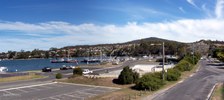
69
St Helens Panorama
Panorama of St Helens, a fishing port, which is sheltered by Georges Bay. The bay is formed by St Helens Point, a long headland, 1,066 hectares of which is reserved as a recreation area. The other side of the bay, Humbug Point, is also a recreation area.
|
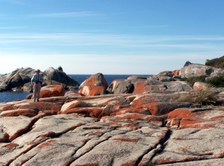
70
Bay of Fires
Red Lichen on Rocks in Binalong Bay near St Helens on the east coast of Tasmania.
| 
71
Red Lichen
Red Lichen adds colour to the Rocks at Binalong Bay.
| 
72
Red Rocks
The Red Lichen adds colour to the Rocks at Binalong Bay.
|

73
Skeleton Point
The Coloured Rocks of Skeleton Point near St Helens.
| 
74
Skeleton Bay
The Blue Waters of Skeleton Bay contrast with the coloured Rocks at Skeleton Point.
| 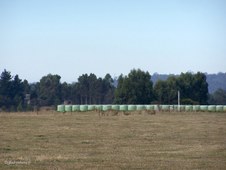
75
Bales of Silage
Plastic-covered bales of Silage in a paddock near St Helens.
|

76
Sewage Farm
Black Swans and other waterbirds on the ponds at the St Helens Sewage Treatment Plant.
| 
77
Sewage Farm
Zoomed in on the Black Swans at the Sewage Ponds.
| 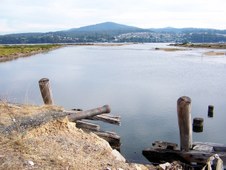
78
St Helens in Distance
Looking along Colchis Creek toward the town of St Helens in the late afternoon.
|

79
Town of St Helens
Zoomed in onto the town of St Helens.
| 
80
Colchis Creek
The Binalong Bay Road crosses Collchis Creek near St Helens.
| 
81
Colchis Creek
Late afternoon light on Colchis Creek.
|

82
Boats on Georges Bay
Boats moored along the Georges Bay Esplanade, St Helens.
| 
83
Pacific Gull (immature)
The Pacific Gull (Larus pacificus) is one of the largest gulls.
| 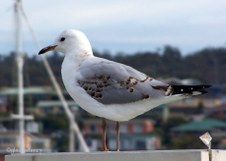
84
Silver Gull (immature)
The Silver Gull (Larus novaehollandiae) is the most familiar of Australian Gulls.
|

85
Fishing Boats in Georges Bay
| 
86
Silver Gull (immature)
Sivler Gull at St Helens.
| 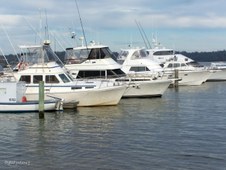
87
Fishing Boats
Georges Bay provides safe shelter for boats at St Helens.
|

88
Georges Bay
Georges Bay viewed through the trees in Kings Park at St Helens.
| 
89
Kings Park
Kings Park is a picnic area with panoramic views over St Helens.
| 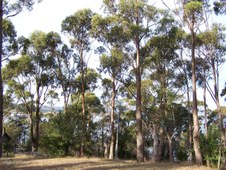
90
Tasmanian Blue Gums
Evening light on the majestic Tasmanian Blue Gums in Kings Park at St Helens.
|
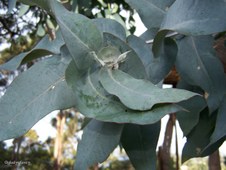
91
Blue Gum Leaves
Close-up of the leaves of the Tasmanian Blue Gum showing the Blue-green colouring.
| 
92
Street Garden
Attractive Street Garden at St Helens.
| 
93
Georges Bay Sunrise
A truly awesome Sunrise over Georges Bay at St Helens. See album 'Tasmanian Sunrise' for full sequence of photos.
|

94
Golden Fleece Bridge
Sunrise on the Golden Fleece Bridge at St Helens.
| 
95
Sunlit Grass
Morning Sun touches the Grass in Medeas Cove, St Helens.
| 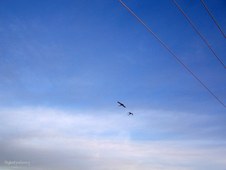
96
Swans Dawn Flight
Two Black Swans flying overhead at Dawn.
|
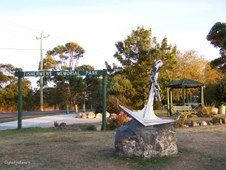
97
Fishermens Memorial Park
The early morning Sun touches Fishermens Memorial Park at St Helens. The town is a fishing port and unfortunately many lives have been lost as these men make their living from Fishing.
| 
98
St Helens Plaque
The Land upon which the township of St Helens is built was once a popular hunting ground of the Tasmanian Aborigines. They lived mainly around the mouth of the George River and this area was known as Kunnara Kuna.
| 
99
Sunrise over Medeas Cove
Medeas Cove framed by trees at Sunrise.
|

100
Medeas Cove
Medeas Cove is a Wildlife Sanctuary and Conservation Area at St Helens.
| 
101
Medeas Cove
The Wetlands of Medeas Cove at St Helens.
| 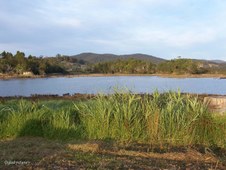
102
Medeas Cove
The Wildlife Sanctuary and Conservation Area of Medeas Cove at St Helens.
|

103
Eucalypts at Medeas Cove
| 
104
Roadside Farm along Tasman Highway
| 
105
Tasman Highway
Rural scene along the Tasman Highway as we travel towards Launceston.
|